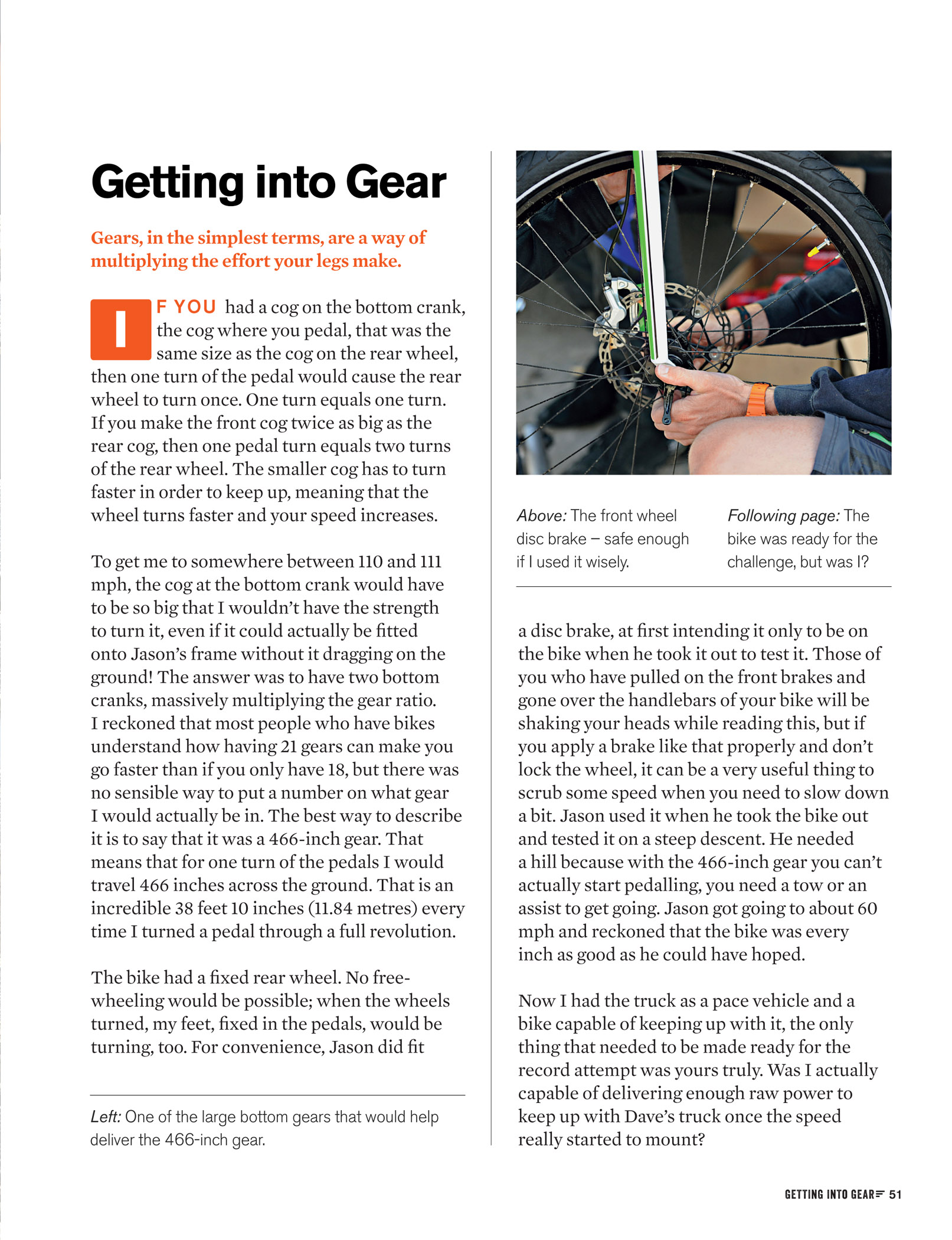
Getting into Gear
Gears, in the simplest terms, are a way of
multiplying the effort your legs make.
F YOU had a cog on the bottom crank,
the cog where you pedal, that was the
same size as the cog on the rear wheel,
then one turn of the pedal would cause the rear
wheel to turn once. One turn equals one turn.
I
If you make the front cog twice as big as the
rear cog, then one pedal turn equals two turns
of the rear wheel. The smaller cog has to turn
faster in order to keep up, meaning that the
wheel turns faster and your speed increases.
To get me to somewhere between 110 and 111
mph, the cog at the bottom crank would have
to be so big that I wouldn’t have the strength
to turn it, even if it could actually be fitted
onto Jason’s frame without it dragging on the
ground! The answer was to have two bottom
cranks, massively multiplying the gear ratio.
I reckoned that most people who have bikes
understand how having 21 gears can make you
go faster than if you only have 18, but there was
no sensible way to put a number on what gear
I would actually be in. The best way to describe
it is to say that it was a 466-inch gear. That
means that for one turn of the pedals I would
travel 466 inches across the ground. That is an
incredible 38 feet 10 inches (11.84 metres) every
time I turned a pedal through a full revolution.
The bike had a fixed rear wheel. No free-
wheeling would be possible; when the wheels
turned, my feet, fixed in the pedals, would be
turning, too. For convenience, Jason did fit
Left: One of the large bottom gears that would help
deliver the 466-inch gear.
Above: The front wheel
disc brake – safe enough
if I used it wisely.
Following page: The
bike was ready for the
challenge, but was I?
a disc brake, at first intending it only to be on
the bike when he took it out to test it. Those of
you who have pulled on the front brakes and
gone over the handlebars of your bike will be
shaking your heads while reading this, but if
you apply a brake like that properly and don’t
lock the wheel, it can be a very useful thing to
scrub some speed when you need to slow down
a bit. Jason used it when he took the bike out
and tested it on a steep descent. He needed
a hill because with the 466-inch gear you can’t
actually start pedalling, you need a tow or an
assist to get going. Jason got going to about 60
mph and reckoned that the bike was every
inch as good as he could have hoped.
Now I had the truck as a pace vehicle and a
bike capable of keeping up with it, the only
thing that needed to be made ready for the
record attempt was yours truly. Was I actually
capable of delivering enough raw power to
keep up with Dave’s truck once the speed
really started to mount?
GETTING INTO GEAR 51